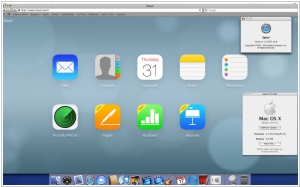SugarSync vs iCloud
August 26, 2023 | Author: Michael Stromann
4
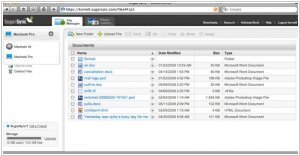
SugarSync makes it easy to backup, share and access your files, anytime, anywhere. With SugarSync you get online cloud storage for all your files — documents, music, photos, and video. When you make a change or add files on any of your PC or Mac computers, SugarSync automatically syncs your files to the cloud, where you can access them from any Internet-connected device — including your smartphone or iPad.
SugarSync and iCloud are both cloud storage services that enable users to store and access their files across multiple devices. However, they have distinct features that cater to different user needs. SugarSync offers flexible and customizable file syncing options, allowing users to selectively sync folders and files of their choice. It provides robust collaboration features, such as shared folders and document versioning, making it suitable for both individual and business users. Additionally, SugarSync supports file permissions and access controls, ensuring secure sharing and collaboration. In contrast, iCloud is an Apple-centric service that seamlessly syncs files, photos, and app data across Apple devices. It offers features like device backups, easy sharing with other Apple users, and tight integration with Apple's ecosystem.
See also: Top 10 Cloud Storages
See also: Top 10 Cloud Storages
SugarSync vs iCloud in our news:
2023. Apple revamps iCloud.com with more features for drive, mail and notes
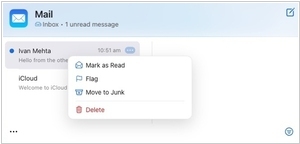
Apple has introduced a revamped version of iCloud.com, enhancing its functionality for PC users. The redesigned website offers support for browser notifications for Mail and Calendar, allowing users to receive alerts directly on their PCs. Additionally, the homepage is now customizable, enabling users to take quick actions like downloading files, deleting emails, marking tasks as unread, and more. This update builds upon last year's redesign, which included quick-glance widgets for apps like Notes and Pages. Furthermore, iCloud.com now enables users to insert links from one note into another, akin to iOS 17, enhancing the overall user experience and productivity on the platform.
2014. Apple iCloud to get folders with files, Windows app
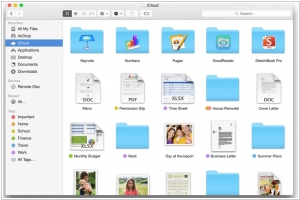
Cloud file storage and sync service iCloud is not well-received among Apple enthusiasts for several reasons. Firstly, it exclusively syncs internal app files, preventing users from accessing them outside these apps. Secondly, its pricing is considered expensive ($20 for 20GB), making it a luxury only affordable for Dropbox. Thirdly, it solely functions on Apple devices, even frustrating Apple fanatics who desire more openness. To address these concerns, Apple has introduced an update to the service, now known as iCloud Drive. This revamped version operates similarly to Dropbox, allowing synchronization of any folders with any files. Additionally, it will offer a client for Windows in addition to the existing Mac and iOS apps. Furthermore, Apple has reduced the pricing, starting from $0.99 per month for 20 GB, and a free storage tier of 5 GB will also be available. These improvements are slated to launch in the upcoming fall alongside the release of the new iOS 8 and OSX Yosemite.
2013. Apple launches iWork for iCloud
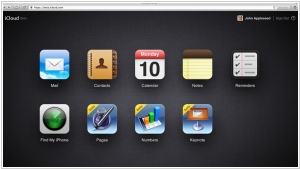
In terms of business applications, Apple has historically shown less interest, but it recognizes the significance of Office as an essential component of its platform. Competitors such as Microsoft and Google have taken significant strides in this area, surpassing Apple. To address this, Apple made a move to rectify the main drawback of its office suite, which was the absence of an online version. During the WWDC conference in June, Apple officially unveiled iWork for iCloud, making the online applications Pages, Numbers, and Keynote accessible to all through iCloud online accounts (currently in beta). However, these editors currently have limitations that may only appeal to users of MS Office and Google Docs. For instance, the text editor Pages lacks the ability to add tables, and spell check functions are only available in English. Collaboration tools are also absent. On a positive note, users can upload and edit MS Word, Excel, and PowerPoint documents, with formatting being preserved in some cases. Additionally, documents can be downloaded in MS Office formats and PDF.
2011. Apple iCloud delighted SaaS vendors

As you may be aware, on Monday, Steve Jobs once again took the stage to unveil another groundbreaking innovation. This time, however, the focus shifted from small metallic devices to something larger and virtual: iCloud - the new cornerstone of Apple's strategy. From an enterprise perspective, iCloud may not be particularly captivating. Its primary function is to synchronize content and applications across all Apple devices (iPad, iPhone, Mac), thereby enhancing personal productivity. Nevertheless, the advent of iCloud has garnered enthusiastic responses from SaaS vendors such as Box.net, Zoho, and Salesforce. These vendors appear content that iCloud does not pose direct competition, as it exclusively caters to Apple devices and lacks collaborative features. However, iCloud's significance lies in the broader shift from desktop-centric computing to the Cloud, as emphasized by Steve Jobs himself. When Jobs asserts that the center of computing is no longer confined to the iPhone or iPad but resides in the cloud, people believe it, including those in the enterprise realm.
2009. SugarSync opens business accounts
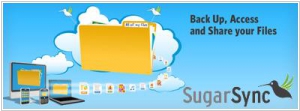
Recently we wrote about to leading file collaboration services - DropBox and Box.net. Now it's time to add to this short list one more tool - SugarSync. During the last few months this service added some very important features: good version control system, free 2Gb subscription plan, iPhone and Android apps and the suitable file sending feature. And yesterday they unveiled business accounts that enable to administrate up to 100 user accounts - the feature that is much expected from DropBox. Besides the ability to create/delete user accounts, administrator can set storage limits for each user (and receive alerts when user is near limit) and easily scale the whole company storage volume. And of course, all payments are centralized. ***
2009. SugarSync comes to Android
SugarSync, the service for managing file syncing, has introduced a new version specifically designed for Android phones and Netbooks. With SugarSync for Android, users can conveniently view and download files on their Android devices, as well as upload local files to their free or premium SugarSync repository. This functionality allows for remote access and online backup, enabling users to access files from various desktops, laptops, or mobile phones across different platforms or via the web. Additionally, the feature enables users to easily share files and folders directly from their Android phones.
2009. SugarSync offers free accounts
SugarSync, a service for synchronizing and backing up files, has introduced free accounts, expanding its offerings beyond the previous minimum cost of $4.99 per month or $49.99 per year. However, there is a limitation on storage space, with free accounts only allowing 2GB of storage. While this may not be sufficient for large file or music backups, it can still prove valuable for syncing a few substantial files across multiple devices, such as accessing project files while on the go. SugarSync stands out from competitors like Dropbox by providing extensive support for mobile devices, including clients for iPhone/iPod Touch, BlackBerry, and Windows Mobile. The newly announced free accounts also include access to these mobile clients, further enhancing their appeal.
2008. Get remote file access, management on your iPhone with Sugarsync
Sugarsync, a premium but highly effective file-syncing and backup solution, has introduced an impressive new iPhone application. This app grants users access to all the files stored on their Sugarsync-linked computers. The standout feature is the lightning-fast updates delivered through push technology, instantly notifying users when a file has been modified by them or another user. During a demo, I witnessed the app in action and was impressed by its sleek design. Each linked computer is represented by a unique icon, and accessing files is as simple as selecting one from a visually appealing spinning wheel interface. One of the app's strengths is its ability to sync multiple computers and seamlessly transfer data between them in the background. In the mobile realm, this system proves particularly useful when sharing large files that cannot be easily emailed directly from the phone. Sugarsync's solution is to provide recipients with a download link, enabling them to retrieve the file through their browser's download manager. The app also offers remote file management options, allowing users to move, rename, and delete files from a distance. Thanks to the live sync server, any changes made are immediately propagated. In the demo, changes made from the desktop to the phone and vice versa were pushed out in approximately one second, even on EDGE networks. Currently, the app faces some limitations regarding file compatibility. While it handles most iPhone-compatible file types (such as MS Office documents, PDFs, and QuickTime movie files) with ease, it has encountered issues with specific movie codecs and audio files. However, supported audio files should play without problems; the challenge lies in enabling multitasking while music is playing, as it currently redirects the file to the full-screen QuickTime player. Future versions are expected to address this limitation. The Sugarsync iPhone application itself is free, but the Sugarsync service is a paid offering. Users can take advantage of a 45-day free trial for the 10GB service, which typically costs around three dollars per month.
2008. SugarSync Adds File Send Feature
The field of file synchronization and backup is seeing significant growth, with Syncplicity, SugarSync, Mozy, and Microsoft's Live Mesh competing to offer cross-platform, cross-device, and cloud-accessible data services. SugarSync, one of the players in this space, has recently announced a development that blurs the lines between synchronization and collaboration even further. With SugarSync's new functionality, users can now send any file from their desktop, web, or mobile SugarSync application, regardless of size or number of recipients. The recipients receive a secure link via email, granting them access to the file for 21 days. If these recipients also use SugarSync, they have the option to synchronize the file across all their devices. The sender receives a notification once the recipients begin downloading the file. To enhance security, the email link is time-limited to 1 day. This development is significant because it expands the scope of synchronization services beyond multiple device access and backup. While Live Mesh offered collaboration, it was limited to Windows. SugarSync's solution, on the other hand, is cross-platform, marking a game-changing move. Having used SugarSync for six months myself to back up and sync files across multiple machines and the web, I can attest to its seamless and reliable performance. It works quietly in the background, ensuring everything stays up to date. Today's updates give SugarSync a unique advantage over other synchronization providers and propel it further into the realm of collaboration solutions.
2008. SugarSync: Most useful sync tool ever. But you'll pay for it
Today marks the public beta launch of SugarSync, a file synchronization product developed by Sharpcast. Unlike other sync tools such as FolderShare and BeInSync, SugarSync utilizes a web-based clearinghouse for file synchronization, ensuring that data on multiple devices remains consistent. The system uploads all files to a server, allowing connected devices to access and update the latest file versions when they come online. SugarSync also offers a mobile component, enabling users to view synced files on their smartphones and automatically upload new photos to their PCs. Despite its efficient performance, the service comes at a cost due to the storage and bandwidth requirements of the SugarSync servers. With pricing starting at $49 per year for 10GB of storage, it may not be the most cost-effective solution for all users. However, the product offers advantages such as online backup functionality and the ability to transcode files for display on various devices. SugarSync simplifies setup and configuration and provides convenient access to data from any connected device or computer. While the service ensures encryption and security, it is important to note that SugarSync holds the encryption keys, although there may be an option for users to set their own keys in the future. Despite its potential, the current pricing structure may limit the widespread adoption of SugarSync until more affordable options become available.

